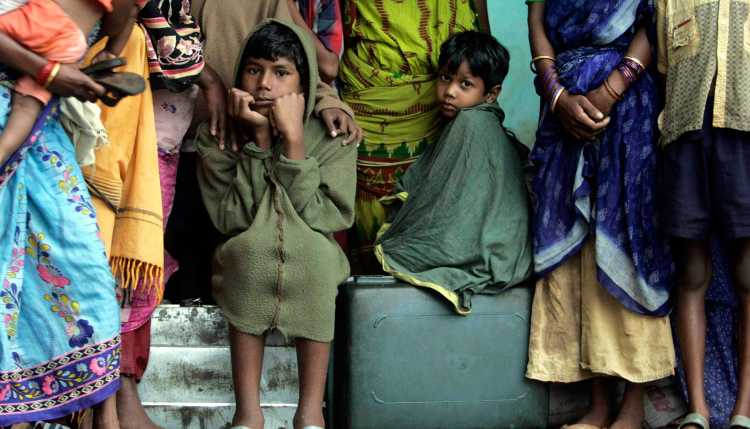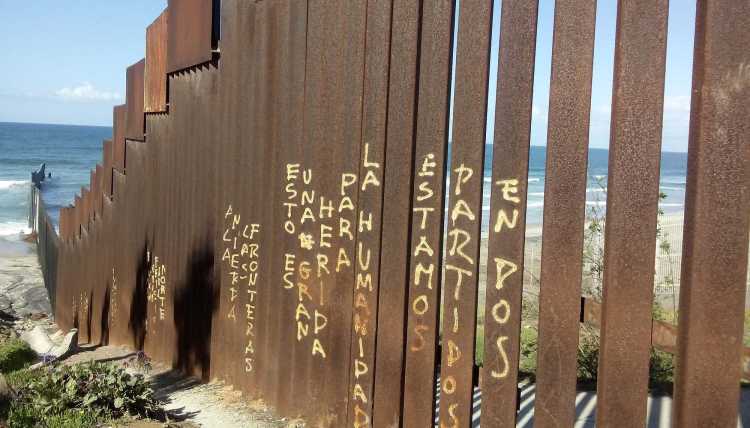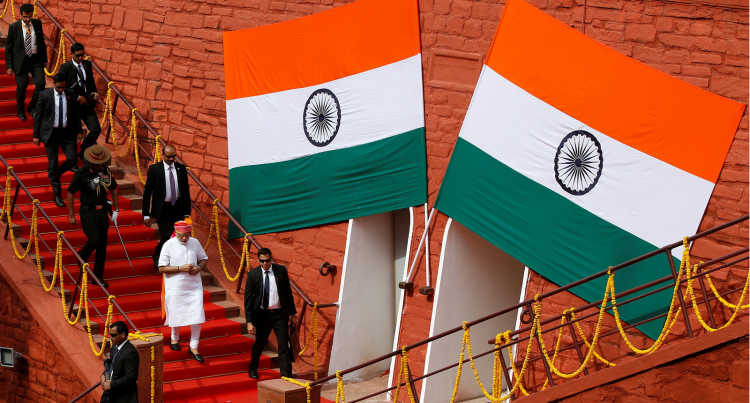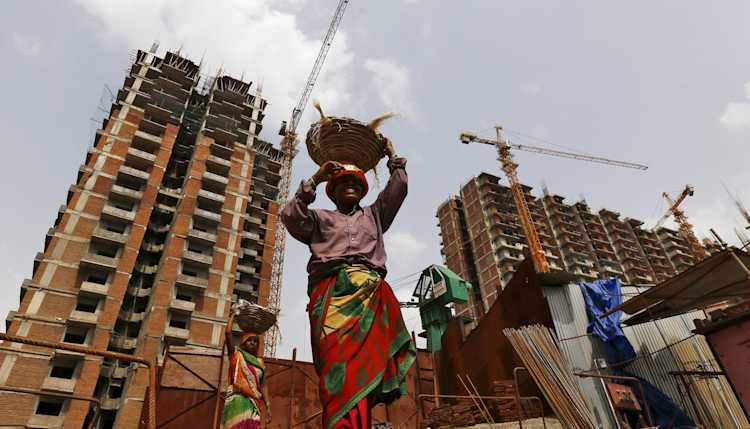- Home
- Publications
- GIGA Focus
- India a Home Only to Hindus? New Refugee Policy Exacerbates Tensions
GIGA Focus Asia
India a Home Only to Hindus? New Refugee Policy Exacerbates Tensions
Number 8 | 2016 | ISSN: 1862-359X

A new citizenship amendment bill introduced in the Indian parliament in July 2016 proposes easing the path to citizenship for Hindus, Sikhs, Buddhists, Jains, Parsis, and Christians fleeing persecution in Afghanistan, Pakistan, and Bangladesh. In omitting Muslims from this provision, however, the bill has rekindled religious and ethnic tensions in India and South Asia.
India is home to one of the largest refugee populations in South Asia, but does not have an asylum law. It has also not signed the 1951 UN convention on refugees. In the absence of formal mechanisms, India has to date dealt with refugees on a case-by-case basis. The proposed amendment seeks to formalise this process.
The amendment bill, however, does not include Muslim groups such as the Shias and Ahmedis being discriminated against in Pakistan, the Rohingyas being persecuted in Myanmar, and undocumented Bangladeshi Muslims living in India.
By specifically naming Muslim majority countries as the countries of origin for refugees, the bill suggests that it is only in those countries that minorities are persecuted, and thus fuels anti-Muslim sentiment. This tacit institutionalisation of the named countries as religious persecutors also does not bode well for neighbourly relations in South Asia.
More crucially, the tabling of the bill is a step towards the fulfilment of the ruling Bhartiya Janta Party’s (BJP) 2014 election promise to make India “the natural home of persecuted Hindus around the world.” By reopening a debate about Indian identity that has its roots in colonial times, the bill risks negatively affecting minority relations in India and its neighbouring countries.
Policy Implications
EU decision makers cautiously welcomed Prime Minister Narendra Modi’s formation of a majority government in the Indian parliament in 2014, after decades of coalition governments. They hoped for faster decision-making that would pave the way for closer economic ties. With India’s refugee regime now reflecting majoritarian tendencies, however, they need to pay equal attention to political developments, especially in the context of increasing majoritarian nationalisms the world over.
A Natural Home to Hindus?
In July 2016, during the monsoon session of the Indian parliament, India’s home minister Rajnath Singh introduced a citizenship (amendment) bill that seeks to ease the path to Indian citizenship for “persons belonging to minority communities, namely Hindus, Sikhs, Buddhists, Jains, Parsis and Christians from Afghanistan, Bangladesh and Pakistan” on the grounds that they are persecuted in these countries. It proposed making an exception for these persons such that they are not designated illegal migrants and reduces the number of years for naturalisation from the usual twelve to seven. The bill is currently under review by a joint parliamentary committee (JPC) consisting of members of the two houses of the Indian parliament, the Lok Sabha and the Rajya Sabha. It was to come up for discussion again in the current winter session (16 November–16 December 2016), but the JPC has said that it needs more time to complete its hearings, so we may have to wait until the parliament’s next budget session (February–May) until it comes up for debate again. Its fallout, however, is already beginning to be felt.
The introduction of the bill in the parliament is part of a broader governmental policy. In September 2015, the government issued a notification exempting Hindu, Sikh, Buddhist, Jain, Parsi, and Christian migrants into India from Afghanistan, Bangladesh, and Pakistan from being imprisoned or deported if they do not have valid travel documents. In July 2016, the government granted members of the aforesaid communities on long-term visas to India the right to open bank accounts, purchase property, and obtain identity documents from the government of India.
The bill is, in many ways, a step towards the fulfilment of the ruling Bharatiya Janata Party’s (BJP) election promise of making India the “natural home of persecuted Hindus around the world” (BJP 2014: 40). In election rallies, Prime Minister Narendra Modi routinely claimed, “we have a responsibility towards Hindus who are harassed and suffer in other countries. India is the only place for them. We will have to accommodate them here” (PTI 2016).
Muslims Not Welcome
The tabled bill extends the rights to five other religious communities, perhaps in a bid not to sound too discriminatory, but nevertheless excludes Muslim migrants from its ambit. This specifically violates Article 14 of the Indian Constitution, which confers equality before law to all persons within the territory of India. Another issue with the bill is its implicit suggestion that it is only in Muslim majority states that members of minority communities are persecuted. Besides ignoring the plight of, for instance, Ahmadis and Shias in Pakistan, the Rohingya Muslims in Myanmar, and even internally displaced Muslims in India, the move invariably feeds into growing anti-Muslim sentiments in India and the world over.
Prior to the tabling of the bill in the parliament in March 2016, Mohit Roy, the convenor of the BJP’s working group on refugee policy (known as the “refugee cell”) in the eastern state of Bengal (bordering Bangladesh) wrote a letter to the home minister urging that the proposal to grant citizenship to Hindu refugees should not take the form of a general amnesty. Instead, he suggested that those seeking citizenship be made to fill out a form with details of their reasons for seeking refuge in India. He further said that the members of the refugee cell were ready to help these refugees fill out the forms. The details collected in the form, he further noted, could then be used to “form a public opinion about the atrocities they face” (Das 2016). This suggests that the bill is as much a means for consolidation of the Hindu majoritarian base of the BJP as for addressing the humanitarian concerns it refers to.
If the proposals of the BJP’s refugee cell are taken into account, especially those related to publicity, they will likely end up further stigmatising India’s Muslims, who at 14.2 per cent of the population make up India’s largest minority. Socio-economic indicators suggest that they are already among the most marginalised groups in India (Sachar 2006). Additionally, by specifically naming Afghanistan, Bangladesh, and Pakistan as sources of “persecuted minorities,” the amendment inadvertently institutionalises the status of these countries as religious aggressors. This is not a sound basis on which to conduct friendly relations and also goes against Prime Minister Modi’s much touted “neighbourhood first” policy.
Most significantly, this is the first time that religion has been explicitly evoked in citizenship legislation in India, suggesting a shift in understandings of what it means to be Indian – and a revisiting of the debate about Indian identity surrounding the partition of British India in 1947. This has repercussions for plurality and diversity not just in India but also in the entirety of South Asia – a region shaped by the legacies of partition.
A Contested Legacy
The contestation over the place of Muslims in Indian identity is closely linked to the very emergence of the concept of the nation in India. The colonial encounter with the British has been found to have played a significant role in the conceptualisation of India as a primarily Hindu civilisation (Thapar 1989). Early nationalist thinkers, attempting to recover Indian nationhood in accordance with the European ideal, drew upon colonial historiography that presented Indian history as sharply divided into successive Hindu and Muslim periods (Thapar 1989; Chatterjee 1986), thereby othering the Muslims of India as a foreign civilisation that invaded and conquered the indigenous Hindus (Chatterjee 1986). The clearest articulation of this view can be found in the works of Hindutva ideologue Savarkar (1928), who argued that only those people who consider India to be their pitrubhumi (father land) as well as their punyabhumi (holy land) can be considered fully Indian. This argument precludes both Muslims and Christians from being fully Indian as, according to Savarkar, their holy lands were Mecca and the Vatican respectively (never mind that Savarkar assumed all Christians to be catholic).
A counter-discourse among the Muslim elite, articulated most powerfully by the founder of Pakistan, Mohammad Ali Jinnah, in the 1940s, drew upon this very historiography to claim that the Muslims of India formed a distinct nation (Jalal 1985). At the same time, the most dominant struggle for independence in India, led by the Indian National Congress and Mahatma Gandhi, sought to promote the idea of India as a plural and multireligious nation. In opposition to Jinnah, various Muslim intellectuals such as Obaidullah Sindhi and Maulana Abul Kalam Azad also fostered the idea of India’s mushtarka qaumiyat, or composite nationalism, which saw merit in India’s plurality.
Partition and the formation of Pakistan in 1947 as a homeland for the Muslims of India resulted in the simultaneous reinforcement of the idea of India as a Hindu nation. This continued to be so despite the postcolonial Indian state’s ongoing emphasis on diversity and plurality in its identity (Roy 2007: 158), and despite the Indian Citizenship Act of 1955, which came into being amidst an unprecedented refugee crisis and avoided reinstating an ethno-religious conception of Indian citizenship (Jayal 2013). The extent to which Muslims were othered can be gauged from the difficulties they faced in claiming Indian citizenship in the years between 1947 and the coming into force of the Indian Citizenship Act in 1955 (Jayal 2013). These difficulties reaffirmed the nominal notion of the Hindu male as the “natural citizen” of India (Jayal 2013).
After independence, the members of the Indian diaspora who were spread across the former British Empire had to register with the respective Indian High Commissions to claim Indian citizenship. In this regard, the discretion exercised by Indian diplomats again reinforced the idea of the naturalness of Hindus belonging to India. For instance, archival research conducted by the author on files from the Indian Ministry of External Affairs for the period 1946–1955 suggests that in the case of Muslims residing in the various countries of the Middle East, much was made of the distinction between “national” and “communal” Muslims, even as claims to citizenship by Hindus were routinely processed. In the course of the Indian struggle for independence, the term “communal” was often used pejoratively to refer to members of the Muslim League who agitated for the formation of Pakistan. In contrast, “national” Muslims were those who supported the cause of India’s unity and composite nationalism. These classifications can be contrasted with the high-profile efforts of India’s first prime minister, Jawaharlal Nehru, in the wake of partition to persuade prominent Muslim artists and intellectuals to stay on in India.
The complication of partition for Indian Muslims came from the fact that they could potentially lay claim to two citizenships. Moreover, the massive interchange of population that took place along India’s western and eastern borders as a result of partition (1947) and lasted more than a decade, vastly complicated the task of distinguishing between citizens and non-citizens. In the end, overlapping ties of ethnicity, language, kinship, and religion with now neighbouring countries resulted in the privileging of the principle of jus soli or territorially defined citizenship in India’s citizenship act, although subsequent amendments – in 1986, 1992, 2004, and 2005 – have tended more towards jus sanguini or the principle of citizenship by blood (Abraham 2014).
Amendments related to the overseas citizenship of India (OCI) legislation 2004, which offers specific rights to “persons of Indian origin” living abroad, have especially complicated the picture. Since a person of Indian origin is identified on the basis of ancestry, the entire populations of Pakistan and Bangladesh can be considered to be of Indian origin – a diaspora India can never acknowledge (Abraham 2014). This in turn led to a clause specifically excluding Pakistani and Bangladeshi citizens from this provision. The amendment bill of July 2016 now appears to make an exception to this clause for non-Muslim citizens of Pakistan and Bangladesh. In the statement of objects and reasons for the amendment, the home minister explicitly refers to the members of the specified communities as “persons of Indian origin.” In thus suggesting, conversely, that Muslims from these countries are not of Indian origin, it also in a way alienates the Muslim population of India and makes explicit the notion that Muslims do not belong to India.
Disentangling the Refugee Regime
Although India is home to one of the largest refugee populations in South and Southeast Asia, it does not have a refugee law, nor has it signed the 1951 UN convention on refugees. In the absence of formal mechanisms, India has to date dealt with refugees on a case-by-case basis. To a large extent, India’s policy towards refugees and migrants from other South Asian nations developed through the experience of dealing with the unprecedented flows of refugees triggered by partition – recorded as the largest mass migration in history – and the need to secure the borders of the newly formed nation state.
Continuous waves of migration post partition, especially along India’s border to East Pakistan (now Bangladesh) made exercising sovereignty over their borders a rather difficult task for the newly formed states of India and Pakistan (Raghavan 2016). These border flows had predated partition by many decades and were part of a more long-term economic ecosystem along the Bengal delta. Despite this, the logic of partition meant that “the traffic across the border after Independence was analysed primarily in terms of religion and nationality by both governments” (Raghavan 2016: 46).
Given their limited resources, neither India nor Pakistan had the wherewithal to take care of those displaced by partition. In fact, both countries approached the United Nation’s 1951 Refugee Convention for help as its mandate was being drafted in 1949. However, they were thwarted in their efforts as the definition of refugees the convention was working with was geared more towards addressing the plight of European refugees in the aftermath of the Second World War. This is also the reason that India did not sign the convention (Oberoi 2001).
Rather than rehabilitation, the only pragmatic recourse left to the two countries then was to persuade the prospective migrants to stay where they were. This involved building trust that the government of the state they found themselves in would ensure their rights. A series of conferences between India and Pakistan aimed at stemming the flow of transborder refugees ultimately led to the signing of the Nehru-Liaquat Pact in 1952 (Raghavan 2016). This pact made the two governments formally responsible to each other on the question of minorities in their countries. Each state committed to the other that it would take care of the members of minority communities (Hindus in the case of Pakistan and Muslims in the case of India) within its borders. As one senior official in the Indian Ministry of External Affairs, Subimal Dutt, wrote in a memo to India’s first deputy high commissioner to Dhaka, S. Bose, in 1950 “[I]n strict theory, minorities must seek the protection of their government, not the government of the neighbouring dominion” (in Raghavan 2016: 51). However, ever since the signing of the pact, neither government has entirely succeeded in securing the rights of minorities in their respective countries. Pakistan and, since 1971, Bangladesh have seen a steady decline in the population of minority religious groups in their countries. Although India’s Muslim population has increased from approximately 9.93 per cent (1951 census) to about 14.2 per cent (2011 census), Muslims remain among the most marginalised socio-economic groups.
The amendment bill introduced in the Indian parliament in 2016 seeks to entirely unravel this highly entangled refugee regime. India already receives a large number of migrants from neighbouring countries. Besides alienating Muslim communities, the passing of the amendment may unwittingly have the effect of triggering a large-scale migration of Hindus and other minorities from neighbouring countries to India, particularly from Pakistan and Bangladesh.
As recurring crises in the state of Assam in the north-east of India, bordering Bangladesh, show, India remains ill-prepared to deal with the consequences of such a large-scale migration. In July 2015, in the lead up to the 2016 elections in the state of Assam, BJP president Amit Shah remarked that “some Hindus have come from Bangladesh due to religious disturbances. The BJP will give all of them citizenship once we come to power in Assam next year” (PTI 2015). The subsequent tabling of the bill in the parliament in July 2016 has led to ongoing protests by the All Assam Students Union (AASU), which fears that a large-scale migration into Assam would result in extreme pressure on the state’s land and resources.
Paving the Way for an Uncertain Future?
With the parliament occupied with managing the fallout from the recently announced currency swap and the JPC asking for more time to conduct its enquiries, the bill is likely to come up for discussion only in the next session of the parliament, which begins in February 2017. If the bill does go through then, it might have considerable repercussions for India and South Asia. Domestically, it could impact local politics in state elections, especially in states such as Uttar Pradesh where several political parties depend on Hindu–Muslim polarisation to augment their vote shares. Pushed to the extreme, it could further stoke ethnic tensions in Assam, and strengthen the appeal of militant outfits such as the United Liberation Front of Asom (ULFA). Lastly, and perhaps most insidiously, it could create a backdoor for Hindu nationalist or majoritarian legislation to become part of the constitution. This could create a situation similar to that in Bangladesh, where secularism and a state religion (Islam) sit uneasily next to each other in the constitution. Such an ambiguity would end up engendering substantial instability in India, one of the most ethnically, religiously, and socially diverse countries in the world.
Externally, for South Asia as a whole, the tacit branding of three of the major and most unstable states of the region – Pakistan, Bangladesh, and Afghanistan – as persecutors of religious minorities is unlikely to pave the way towards a friendlier neighbourhood. It may in fact end up worsening an already tense situation. In the longer term, the enactment of the bill could also lead to further instability by exacerbating tensions between minority and majority populations in the region as a whole. Further, such a move by India could even be interpreted as an implicit approval of Buddhist majoritarian movements in Sri Lanka and Myanmar and thus may embolden further actions against Muslim minorities in those countries.
Even if the bill remains on the back burner, it signals the ruling BJP’s commitment to Hindu majoritarian preferences and reinforces the idea of India as a natural home for Hindus. This is bound to have repercussions for the many minority religious and ethnic groups within India. Already, the mere tabling of the bill in the parliament has led to protests within the state of Assam. The polarisation of majority and minority communities within India, in turn, is likely to affect the country’s relations with neighbouring countries. India, as a secular, plural democracy, often uses the “moral high ground” as an instrument of foreign policy. By vitiating its secular fabric in favour of majoritarian nationalism, India would not legitimately be able to take recourse to this moral high ground and would thus lose its diplomatic room to manoeuvre.
The Global Rise of Majoritarianism
The rise of majoritarian politics in India needs to be further looked at in the light of increasing majoritarianism and ethnic nationalism in several parts of the world, as manifested in the Brexit vote in the United Kingdom and the voting in of President Trump in the USA. The ruling BJP in India is likely to find common ground with President Trump in his anti-Muslim rhetoric (couched in anti-terror terms). Indeed, supporters of the ruling party in India vocally supported Trump’s candidature. At the same time, unlike the inward-looking ethnic nationalists in the richer parts of the world, Hindu nationalists bank very much on globalisation for bringing prosperity to India. If President Trump makes good on his electoral promise of disengaging from the rest of the world, it may upset the calculations of the Hindu nationalist government and push it to pursue an even more divisive agenda to distract attention from lack of progress on the economic front.
European policymakers cautiously welcomed Narendra Modi’s prime ministership in 2014 when his party was voted into parliament with a clear majority after decades of coalition government in India. It was hoped that he would push through economic reforms that would, once again, rev up India’s economic growth, making it an attractive investment destination once again. Now however, with a new refugee regime reflecting growing majoritarian tendencies and the potential exacerbation of domestic and regional tensions in sight, they should not ignore the political climate in India and South Asia, as this has the potential to derail any economic progress.
Footnotes
References
Abraham, Itty (2014), How India Became Territorial: Foreign Policy, Diaspora, Geopolitics, Stanford: Stanford University Press.
BJP (2014), Ek Bharat Shreshtha Bharat, Sabka Saath Sabka Vikas: Election Manifesto 2014, www.bjp.org/images/pdf_2014/full_manifesto_english_07.04.2014.pdf (25 November 2016).
Chatterjee, Partha (1986), Transferring a Political Theory: Early Nationalist Thought in India, in: Economic and Political Weekly, 21, 3, 120–128.
Das, Madhuparna (2016), BJP Cell for Fast-tracking grant of Citizenship to Hindus, in: The Economic Times, http://economictimes.indiatimes.com/news/politics-and-nation/bjp-cell-for-fast-tracking-grant-of-citizenship-to-hindus/article-show/51247939.cms (25 November 2016).
Jalal, Ayesha (1985), The Sole Spokesperson, Cambridge: Cambridge University Press.
Jayal, Niraja (2013), Citizenship and its Discontents: An Indian History, Cambridge, MA: Harvard University Press.
Lok Sabha (2016), The Citizenship (Amendment) Bill 2016, http://164.100.47.4/BillsTexts/LSBillTexts/Asintroduced/172_2016_LS_ENG.pdf (5 November 2016).
Oberoi, Pia (2001), South Asia and the Making of the International Refugee Regime, in: Refugee, 9, 5, 36–45.
PTI (2016), Government Introduces Bill to Amend Citizenship Act, in: Indian Express, http://indianexpress.com/article/india/india-news-india/government-introduces-bill-to-amend-citizenship-act-2924253/ (25 November 2016).
PTI (2015), BJP Promises Indian Citizenship for Bangladeshi Hindu Refugees, in: The New Indian Express, www.newindianexpress.com/nation/2015/apr/26/BJP-Promises-Indian-Citizenship-For-Bangladeshi-Hindu-Refugees-747454.html (25 November 2016).
Raghavan, Pallavi (2016), The Making of South Asia’s Minorities: A Diplomatic History, 1947-52, in: Economic and Political Weekly, 51, 21, 45–52.
Roy, Srirupa (2007), Beyond Belief: India and the Politics of Postcolonial Nationalism, Durham: Duke University Press.
Sachar, Rajindar (2006), Social Economic and Educational Status of the Muslim Community of India, New Delhi: Cabinet Secretariat, Government of India.
Savarkar, Vinayak Damodar (1928), Hindutva: Who is a Hindu, Bombay: Veer Savarkar Prakashan.
Thapar, Romila (1989), Imagined Religious Communities? Ancient History and the Modern Search for Hindu Identity, in: Modern Asian Studies, 23, 2, 209–231.
Varshney, Ashutosh (1993), Contested Meanings: India’s National Identity, Hindu Nationalism, and the Politics of Anxiety, in: Daedalus, 122, 3, 227–261.
General Editor GIGA Focus
Editor GIGA Focus Asia
Editorial Department GIGA Focus Asia
Regional Institutes
Research Programmes
How to cite this article
Medha, None (2016), India a Home Only to Hindus? New Refugee Policy Exacerbates Tensions, GIGA Focus Asia, 8, Hamburg: German Institute for Global and Area Studies (GIGA), http://nbn-resolving.de/urn:nbn:de:0168-ssoar-51592-1
Imprint
The GIGA Focus is an Open Access publication and can be read on the Internet and downloaded free of charge at www.giga-hamburg.de/en/publications/giga-focus. According to the conditions of the Creative-Commons license Attribution-No Derivative Works 3.0, this publication may be freely duplicated, circulated, and made accessible to the public. The particular conditions include the correct indication of the initial publication as GIGA Focus and no changes in or abbreviation of texts.
The German Institute for Global and Area Studies (GIGA) – Leibniz-Institut für Globale und Regionale Studien in Hamburg publishes the Focus series on Africa, Asia, Latin America, the Middle East and global issues. The GIGA Focus is edited and published by the GIGA. The views and opinions expressed are solely those of the authors and do not necessarily reflect those of the institute. Authors alone are responsible for the content of their articles. GIGA and the authors cannot be held liable for any errors and omissions, or for any consequences arising from the use of the information provided.




















